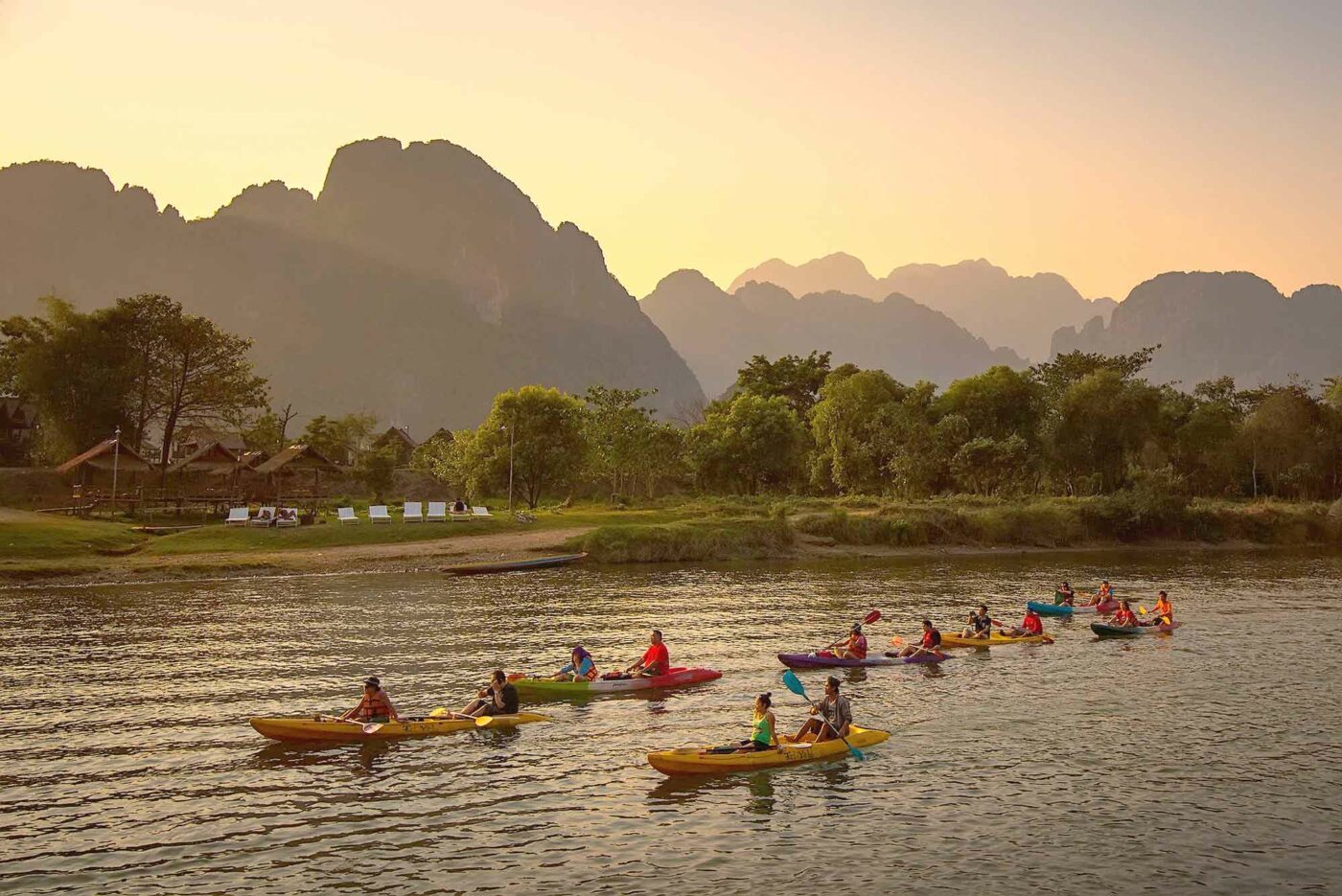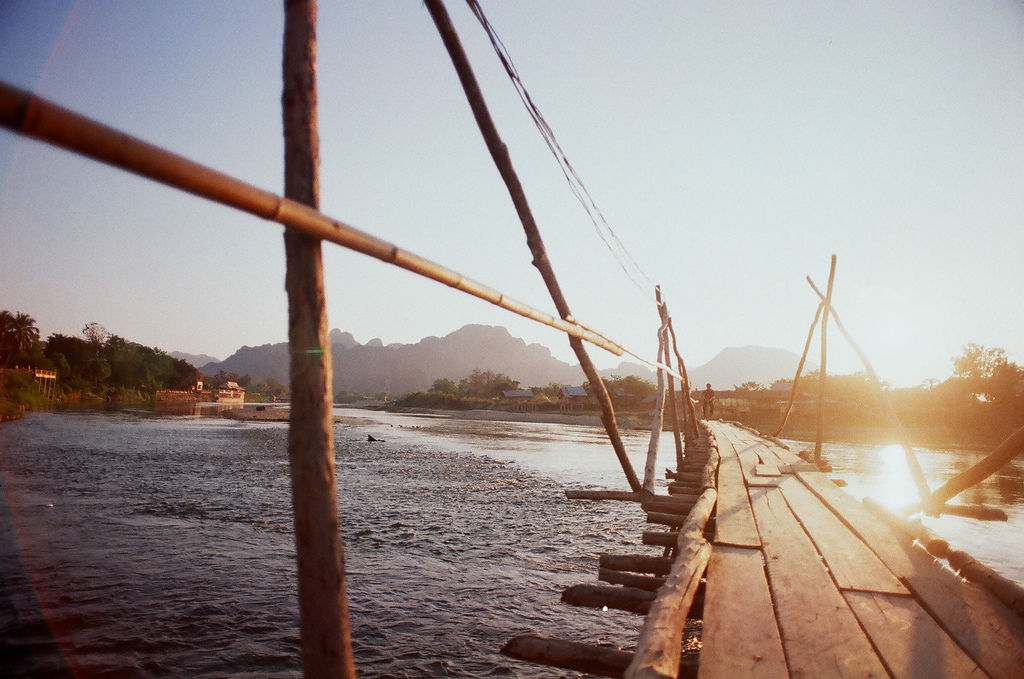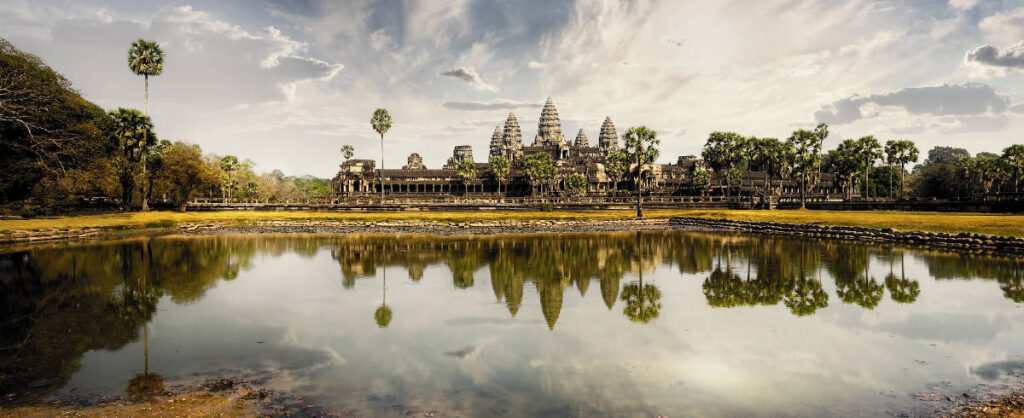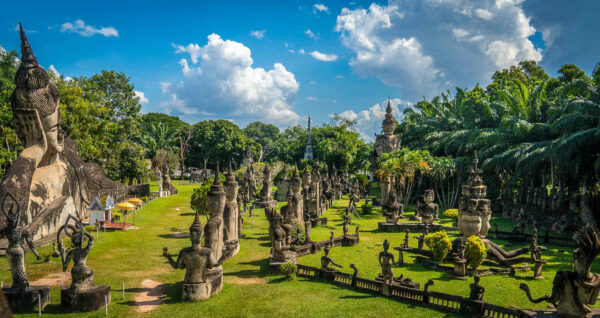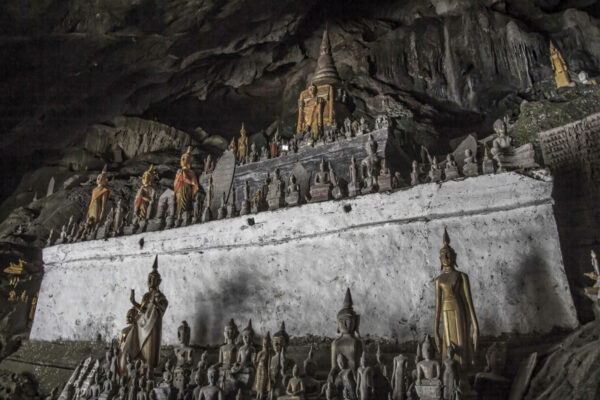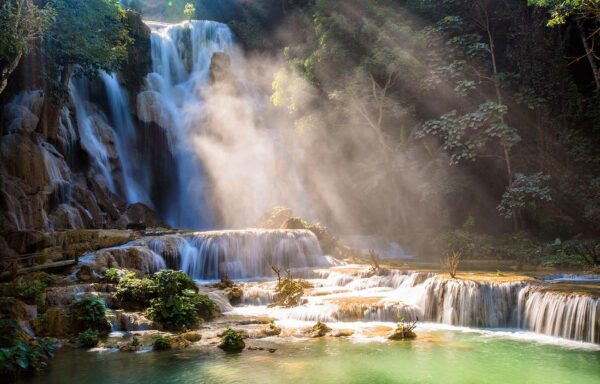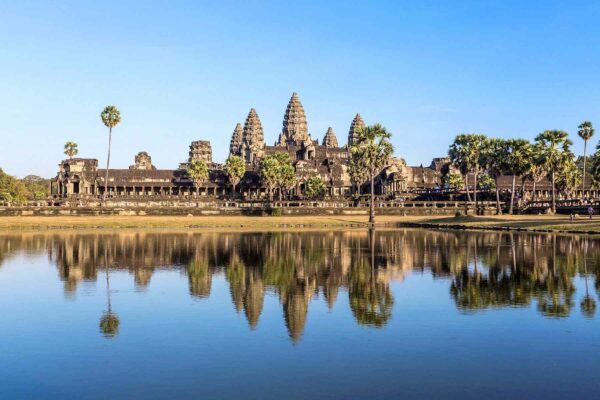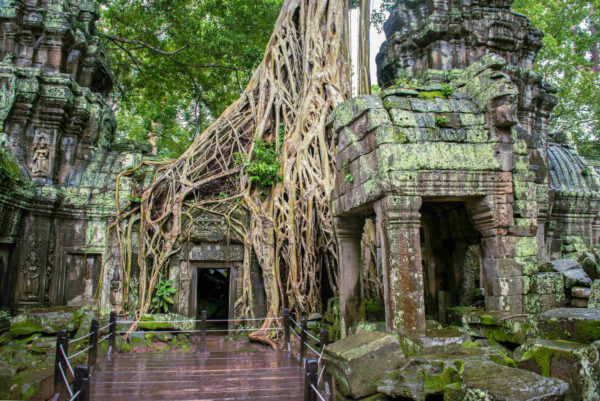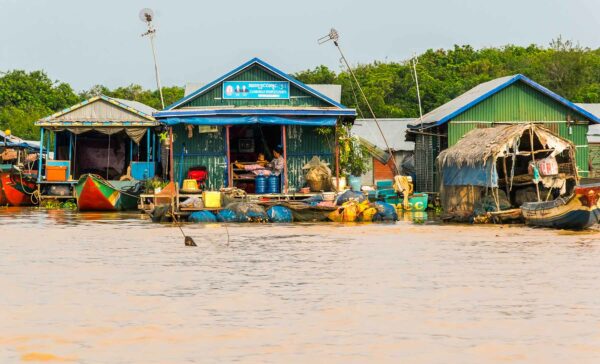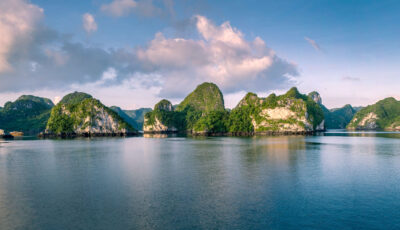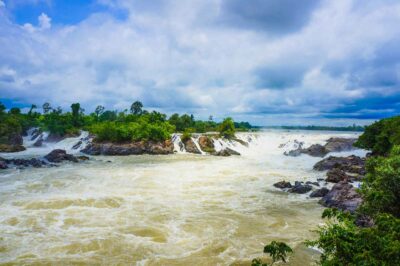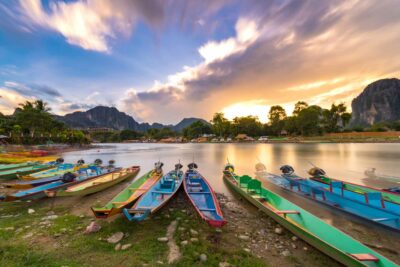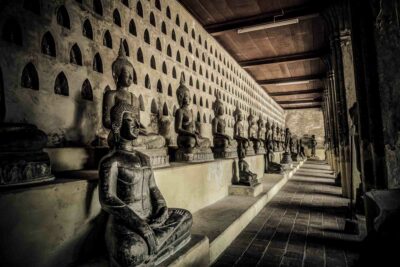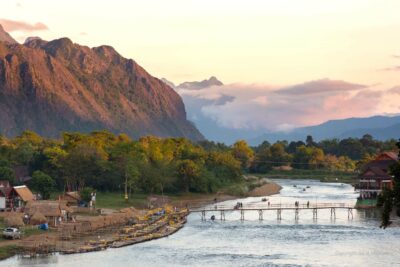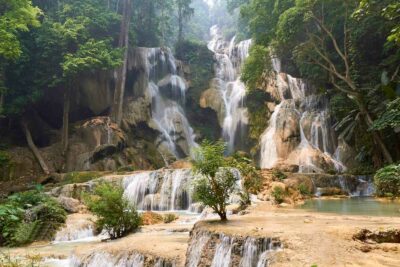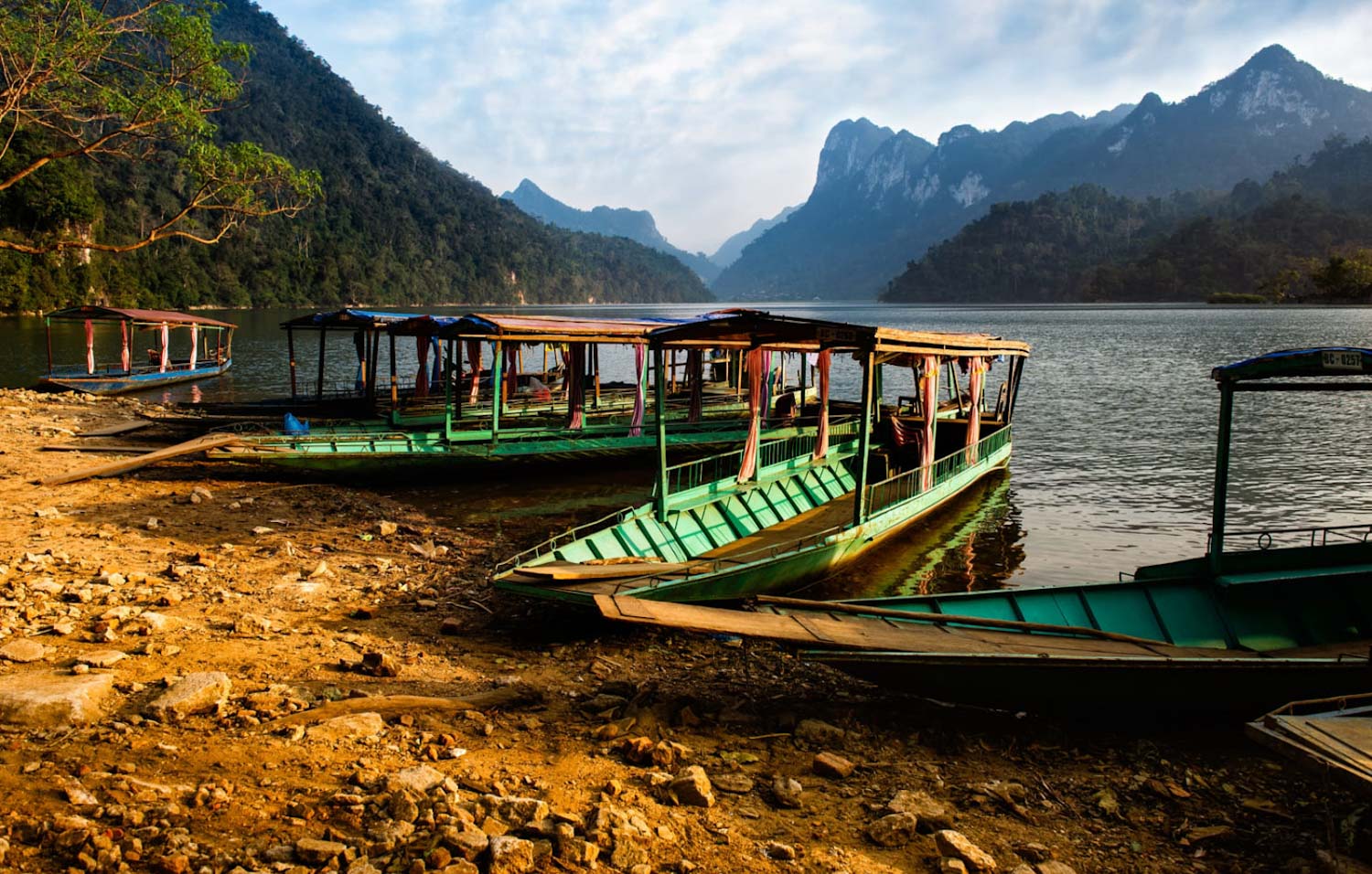Introduction
Embark on an unforgettable journey through the enchanting landscapes and rich cultures of Laos and Cambodia. This carefully curated itinerary takes you from the serene temples and bustling streets of Vientiane to the tranquil beauty of Vang Vieng’s limestone caves and the historic charm of Luang Prabang. You’ll cruise along the Mekong River, marvel at the majestic Kuang Si Waterfalls, and immerse yourself in local traditions.
Continuing to Cambodia, explore the awe-inspiring temples of Angkor, including the iconic Angkor Wat and the mysterious Ta Prohm, intertwined with nature. Discover the vibrant communities of Tonle Sap Lake, delve into Khmer heritage at the National Museum, and witness the exquisite craftsmanship of local artisans.
This journey promises a harmonious blend of natural wonders, cultural treasures, and unforgettable experiences, leaving you with cherished memories of Southeast Asia’s most captivating destinations.
Itinerary
Day 1: Vientiane / Arrival
Arrival at airport in Vientiane, we welcome you and transfer you to hotel. Check-in at hotel.
Spend your leisure time in Vientiane city.
- Overnight in Vientiane.
- N/A
Day 2: Vientiane (city tour)
We begin our tour by visiting the serene Wat Sisaket, one of the most beautiful temples in the capital. Continue on to the nearby Wat Phra Keo. Used as a religious museum, Wat Phra Keo displays a collection of both Lao and Khmer works of art. Next, we visit COPE, an association working to help landmine victims. Lunch at a local restaurant.
After lunch, we stop at the Patuxay monument, Laos’ version of the Arc de Triomphe. Continue out visit at Pha That Luang, the holiest site in Laos. We drive out of the city to visit the Buddha Park which contains numerous religious images. Back to the city.
- Overnight in Vientiane.
- B,L
Day 3: Vang Vieng → Vang Vieng
In the morning, we depart the capital for Vang Vieng, enjoying stunning countryside views on our way to the mountainous region. Arriving around noon, we spend the afternoon touring paddy fields and visiting Tham Nangfa (Angel Cave), known for its impressive limestone formations and unique stalactites. Along the way, you'll experience local village life.
After exploring the cave, we visit the Blue Lagoon, where you can swim or explore the area. The day concludes with a tranquil 30-minute upstream cruise on the Nam Song River in a local long-tail boat, taking in the scenic beauty before returning to your hotel.\
- Overnight in Luang Prabang.
- B,L
Day 4: Vang Vieng → Luang Prabang
After enjoying breakfast at the hotel, you will have some free time to relax or explore at your leisure. Following this, we will board the train to Luang Prabang, a journey of approximately one hour.
Upon arrival in Vang Vieng, our driver will be waiting to transfer you to your hotel for check-in.
- Overnight in Luang Prabang
- B
Day 5: Luang Prabang (Mekong River boat trip)
After breakfast, visit the Royal Palace Museum, built in 1904 for King Sisavang Vong, then enjoy a leisurely cruise on the Mekong River to the Pak Ou Caves, filled with thousands of Buddha statues. Stop at Ban Xanghai village to sample local rice wine before returning to visit Wat Sene and Wat Xiengthong, known for its stunning architecture and mosaics. Explore Heuan Chan, a 19th-century mansion showcasing Lao culture, and enjoy authentic Lao coffee or tea.
End the day with sunset views from Phousi Hill and a visit to the vibrant Night Market in Luang Prabang.
- Overnight in Luang Prabang.
- B,L
Day 6: Luang Prabang (KuangSi Waterfall)
Begin your day with a visit to a community-based rice farm near Luang Prabang, where you can participate in farming activities or observe from a traditional Lao rice house. Explore nearby artisan workshops and learn about traditional medicine in an organic garden.
In the afternoon, visit the stunning Kuang Si waterfalls, perfect for swimming, followed by a stop at the Bear Rescue Center. End your day at the Ock Pop Tock Living Craft Center, where artisans create high-quality fabrics, before returning to your hotel in Luang Prabang.
- Overnight in Luang Prabang.
- B,L
Day 7: Luang Prabang → Siem Reap
Morning, breakfast at hotel.
Spend your leisure time in the city until we transfer you to airport for flight to Siem Reap.
- Overnight in Siem Reap.
- B,L
Day 8: Siem Reap
In the morning, you will visit Angkor Thom, the ancient capital of the Khmer empire. Then, you will continue your visit to Ta Prohm, a stunning temple complex with trees and vegetation growing around and through its structures. Lunch will be at a local restaurant.
In the afternoon, you will visit Angkor Wat, the most famous of all the temples in Angkor. Angkor Wat is a massive temple complex and is one of the largest religious monuments in the world.
In the evening, enjoy buffet dinner and watch Khmer Traditional Dance Show at a local restaurant.
- Overnight in Siem Reap.
- B,L,D
Day 9: Siem Reap
Morning, start the tour by visiting the National Museum. Here, you can explore a collection of Khmer art, artifacts, and historical exhibits that provide insights into the culture and history of Cambodia.
After the museum, take a boat trip on Tonle Sap Lake, one of the largest lakes in Asia. This is an opportunity to enjoy stunning views of the lake and see some of the local fishing villages and floating communities that call it home.
After the lake tour, head to downtown to visit Artisan's D'angkor, the carving art school, where you can witness the intricate art of stone carving and other traditional crafts. Next, continue your visit to Wat Thmei, a beautiful pagoda that is known for its memorial stupa that contains the skulls of Khmer Rouge victims.
Afterward, enjoy lunch and spend some leisure time in Siem Reap until it is time for your departure flight home.
- -
- B,L
End of the tour!
Price
$1,490
This price is based on 3 star hotels and private tour. The tour is upgradable.
| Hotel upgrade | Cost |
| 4 star | $270 |
| 5 star | $590 |
| 5 star+ | $860 |
| Tour upgrade | Cost |
| Private Tour You only | Current |
| Private+ Top class | $940 |
INCLUSION
 All flights in the tour.
All flights in the tour.
 Hotel & accommodation
Hotel & accommodation
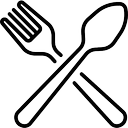 Meals (B,L,D = Breakfast, Lunch, Dinner).
Meals (B,L,D = Breakfast, Lunch, Dinner).
 Transfer vehicle.
Transfer vehicle.
 English speaking guide.
English speaking guide.
 Entrance and sightseeing tickets.
Entrance and sightseeing tickets.
EXCLUSION
 Drinks.
Drinks.
 Tips.
Tips.
 Personal expenses.
Personal expenses.
 International flights.
International flights.
SINGLE SUPPLEMENT:
May be applied with solo traveler.

